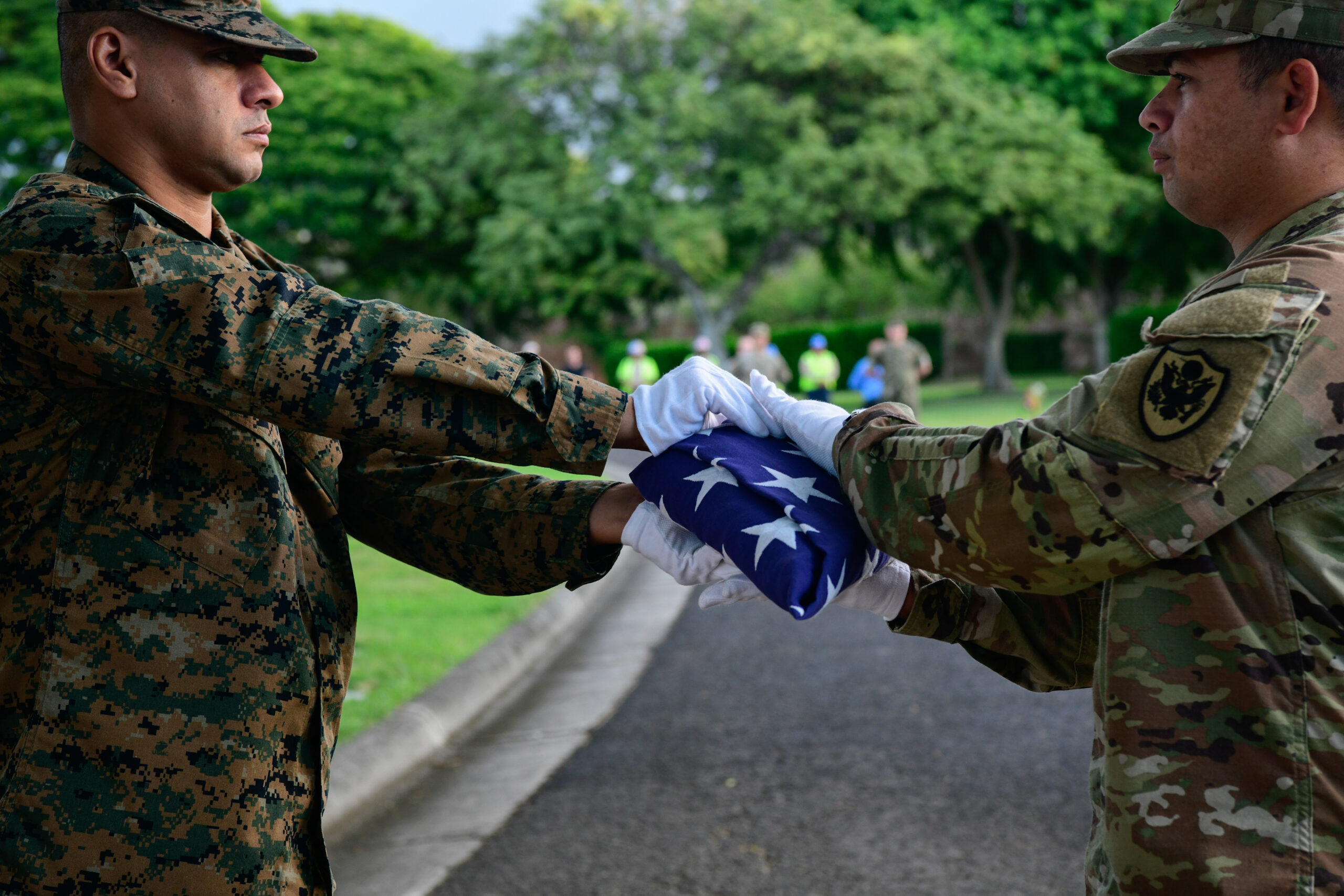

Searching for America’s unaccounted service members, last known as a prisoner of war (POW) or missing in action (MIA), is no easy task. The Defense POW/MIA Accounting Agency (DPAA) is charged with the sacred duty of locating the unaccounted for and has announced six service members now accounted for, along with the service members’ families briefed, within the past two weeks.
The six service members identified include:
- U.S. Navy – World War II: Mess Attendant 3rd Class (Matt3c) David Walker, 19, was accounted for on November 27, 2023.
- U.S. Navy – World War II: Seaman 2nd Class (S2c) George T. George, 26, was accounted for on Jan. 26, 2017.
- U.S. Army Air Forces – World War II: Sgt. Frank J. Seiferheld, 25, was accounted for on Feb. 12, 2024.
- U.S. Army – World War II: Cpl. Frank V. Benak, 24, was accounted for on Feb. 2, 2024.
- U.S. Army – Korean War: Capt. Erik F. Yde, 32, was accounted for on June 22, 2023.
- U.S. Army – Korean War: Pvt. 1st Class Anthony J. Lopa, 17, was accounted for on July 21, 2023.
There are over 81,000 service members who remain unaccounted for since the end of America’s wars dating back to World War II. The majority of those unaccounted for served in the Indo-Pacific region during WWII, totaling 72,766 still unaccounted for. Of those, approximately 26,000 are assessed by the DPAA as “possibly-recoverable.”
There is often a delay between the DPAA accounting for the service member and families being briefed about it. While some families are very involved in the search for their unaccounted loved one, locating a service member’s next of kin isn’t a simple process.
Subscribe to Task & Purpose today. Get the latest military news and culture in your inbox daily.
“This could take some time depending on the level of information available about the veteran’s surviving family members, where they reside or have moved over the decades, if there are DNA samples on record, or even if the [next of kin] is aware they were related to the veteran,” said Lt. Cmdr. Sean Brophy, Director of Public Affairs at Navy Personnel Command.
Once the DPAA confirms the remains of a service member through various verifications — like dental records and mitochondrial DNA analysis — the service member’s mortuary affairs unit is notified. Brophy said each branch has similar procedures for finding, notifying, and helping the service member’s next of kin.
Once a family is notified, the mortuary affairs personnel assist them with funding the transportation of the accounted-for veteran, paying for transportation of the family, providing a military honors detail, assigning a media liaison, and anything else required for laying the veteran to rest with honor.
Brophy said some barriers faced by the units can include the family being elderly and unable to travel while others weren’t aware of their accounted-for relative.
The DPAA goes to great lengths to identify prisoner of war or missing-in-action service members. They send out teams to search for remains based on historical records and last known information, while other times, they have to request access to disinter remains from military cemeteries.
Starting in 1945, the American Graves Registration Service began locating and identifying unknown remains of WWII prisoner of war and missing-in-action service members. If they could not identify the remains, they buried them in the appropriate military cemeteries, like Hawaii’s National Memorial Cemetery of the Pacific — informally known as the Punchbowl.
The DPAA’s mission will likely never be completed, or at least not until every American is brought home.
The latest on Task & Purpose
- Air Force special operators must take class before getting shaving waivers
- Camp Pendleton Marines encouraged to fix their own barracks rooms
- 101st Airborne soldiers are first to receive new Next Gen Squad Weapon
- Air Force fires commander of Holloman maintenance group
Army investigating Nazi imagery on Special Forces patch posted online